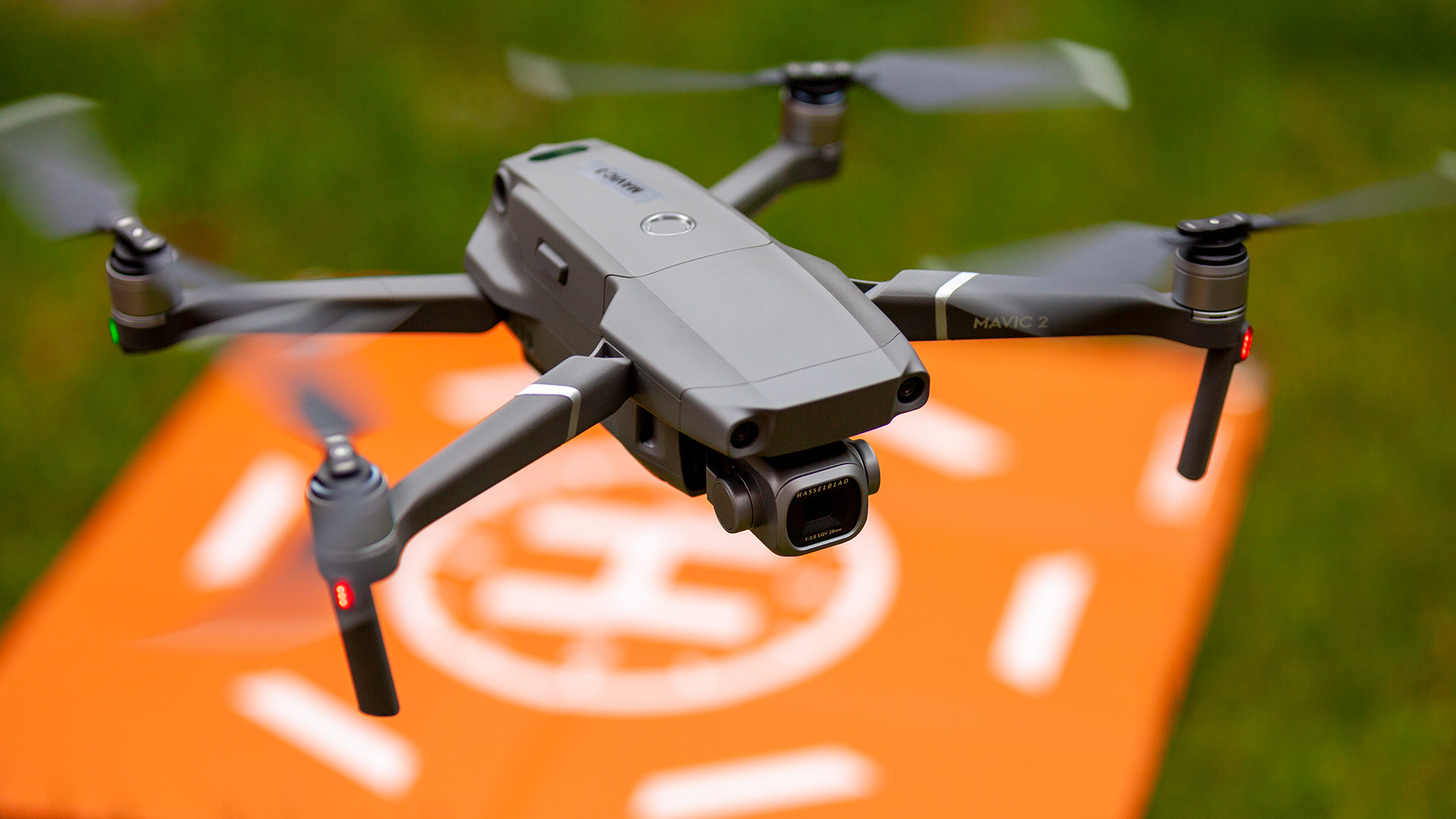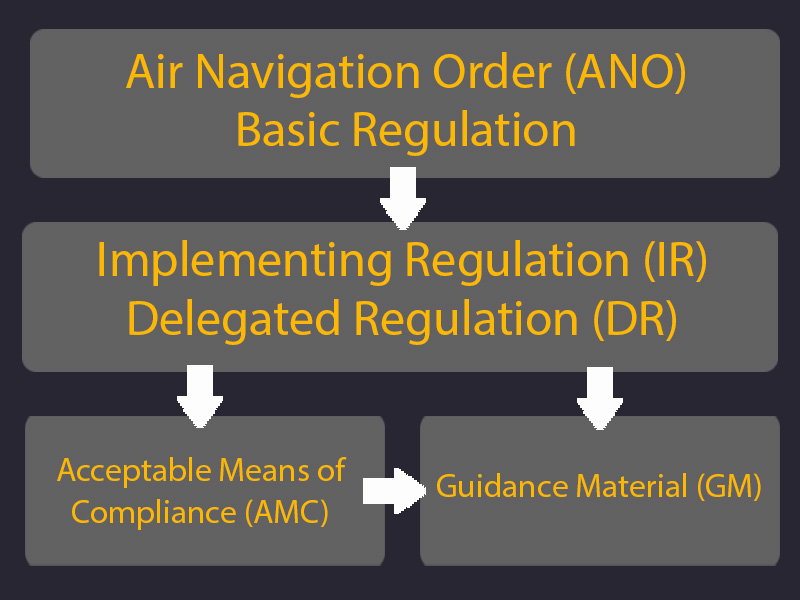Read Time 10 mins
13/06/2023

Introduction
Welcome to our exploration of the UK's regulatory landscape for Unmanned Aircraft Systems (UAS), popularly known as drones. Whether you're a drone hobbyist, an aspiring commercial operator, or a curious bystander, this knowledge could be invaluable.
The world of aviation regulations can seem complex and bewildering, laden with acronyms and jargon. In this blog post, we aim to demystify these terms, providing a comprehensive yet easy-to-understand guide on UK aviation regulations for drones. We'll delve into the roles of different regulatory bodies, dissect key regulations, and discuss what they mean for those operating drones in the UK.

Breaking Down the Regulations: ANO, Basic Regulation, and Implementing Regulations
To understand how the UK regulates drone operations, we need to explore three key pieces of legislation: The Air Navigation Order (ANO), the Basic Regulation, and the Implementing Regulations.
The Air Navigation Order (ANO)
The ANO is a piece of UK legislation that governs civil aviation, including the operation of drones. It sets out the 'rules of the sky', covering a wide range of issues from airspace restrictions to minimum safe heights for flight.
When it comes to drone operations, the ANO lays down some important rules. For example, it sets out restrictions on flying near other aircraft or certain types of buildings and structures.
https://www.caa.co.uk/media/1a2cigrq/air-navigation-order-2016-amended-april-2022-version.pdf
The Basic Regulation (Regulation (EU) 2018/1139)
The Basic Regulation is an EU regulation that sets out the overarching framework for aviation safety in the EU. It outlines high-level rules and principles for all aspects of civil aviation, including drones.
The Basic Regulation is important for drone operators in the UK because, even though the UK has left the EU, much of the EU's aviation regulation - including aspects of the Basic Regulation - has been retained in UK law.
https://www.easa.europa.eu/en/document-library/regulations/regulation-eu-20181139
The Implementing Regulations
Within the context of aviation, Implementing Regulations are used to enforce the standards and requirements outlined in the Basic Regulation. They cover a wide range of safety and operational aspects, including airworthiness, air operations, air traffic management, and more.
After Brexit, the UK is no longer directly bound by EU laws including Implementing Regulations. However, the Civil Aviation Authority (CAA), the UK's national aviation authority, still aligns with many EU standards.
The following Implementing Regulations are two EU regulations that provide more detailed rules for drone operations.
UK Regulation (EU) 2019/945 (UAS Delegated Regulation)
Regulation 2019/945 deals with the technical and operational requirements for drones.
https://www.legislation.gov.uk/eur/2019/945/contents
(A Delegated Regulation is a type of EU regulation that gives the European Commission the power to supplement or amend non‑essential parts of EU legislative acts, for example, in order to define detailed measures. In the context of the UK, these may still be followed in order to align with international best practices.)
Implementing Regulation (EU) 2019/947
Regulation 2019/947 sets out the rules and procedures for drone operations.
https://www.legislation.gov.uk/eur/2019/947/contents
These regulations categorise drone operations into 'Open', 'Specific', and 'Certified' categories, each with its own set of rules. For instance, the 'Open' category covers low-risk operations, with limitations on operational altitude and mandatory distance from people, among other things.
Even though these are EU regulations, they are crucial for UK drone operators. This is because they were adopted into UK law on December 31, 2020, meaning that they continue to apply even after Brexit.
Understanding these three pieces of legislation - the ANO, the Basic Regulation, and the Implementing Regulations - is key to navigating the regulatory landscape for drone operations in the UK.
A Note About “Articles”
References to the "Articles" of Implementing Regulations (IRs) such as the EU 2019/947 are quite common and integral to understanding and following the rules. The term "Articles" refers to the specific sections or provisions within these regulations. Each Article deals with a different aspect of the regulatory framework, providing detailed guidance on various topics ranging from registration and identification of drones, categories of operations, operational authorisations to insurance requirements.
Acceptable Means of Compliance
Now that we've explored the key pieces of legislation that govern drone operations in the UK, let's dive into another important concept: Acceptable Means of Compliance (AMC).
AMCs provide practical guidelines on how to comply with the Implementing Regulations. While the regulations set out the 'what' - the rules that must be followed - the AMCs offer guidance on the 'how' - practical steps that can be taken to ensure compliance with the rules.
It's important to understand that AMCs are not mandatory in themselves. Instead, they offer one recognized way to comply with the regulations. If a drone operator follows an AMC, they can be confident that they are complying with the relevant rule.
However, AMCs are not the only way to comply. A drone operator can choose to use an alternative means of compliance, as long as they can demonstrate that their chosen approach also meets the requirements of the regulations.
In the context of the Implementing Regulations for drones, the European Union Aviation Safety Agency (EASA) has developed a series of AMCs that provide detailed guidance on a range of issues, from technical requirements for drones to operational procedures.
These AMCs continue to be recognised in the UK, despite the country's departure from the EU. This means that UK drone operators can refer to EASA's AMCs for guidance on how to comply with the Implementing Regulations.
The AMCs for the Implementing Regulations that pertain to UAS Operations can be found here:
https://regulatorylibrary.caa.co.uk/2019-945/Content/UAS945_Title.htm
https://regulatorylibrary.caa.co.uk/2019-947/Content/UAS947_1.htm
Guidance Material
While legislation and compliance might be the pillars of aviation regulations, Guidance Material (GM) forms the invaluable scaffolding that supports a complete understanding of these regulations. GMs provide additional explanation and clarity on the implementation of aviation laws, making them a critical resource for anyone looking to navigate the skies with a drone in the UK.
Guidance Material, like the Acceptable Means of Compliance, helps interpret and apply the rules laid out in aviation legislation. While AMC tends to focus more on how to meet specific regulatory requirements, GM provides broader advice, explanations, and examples to aid understanding of the regulations.
The UK's Civil Aviation Authority (CAA) provides numerous GMs to help operators understand the rules for Unmanned Aircraft Systems (UAS) and safely conduct drone operations. Below is a non-exhaustive list of GMs published by the CAA that pertain to drone operations:
CAP 722: Unmanned Aircraft System Operations in UK Airspace - Guidance
This document is one of the most comprehensive sources of guidance for drone operations in the UK. It covers a wide range of topics, from the basics of the UK's drone regulations to detailed information on risk assessment and operational safety.
The guidance offered by CAP 722 is extensive, with various sections addressing different areas of drone operations. For example, it provides advice on how to comply with the 'Open', 'Specific', and 'Certified' categories of drone operations as defined by the Implementing Regulations (EU 2019/945 and EU 2019/947).
https://publicapps.caa.co.uk/modalapplication.aspx?catid=1&pagetype=65&appid=11&mode=detail&id=415
CAP 1789 A & B: The EU UAS Regulation Package - Outline
These 2 documents provide an outline of the EU regulations concerning Unmanned Aircraft Systems, highlighting their relevance to the UK context. It's particularly useful for those looking to understand the broader European regulatory landscape and its influence on the UK's UAS rules.
https://publicapps.caa.co.uk/modalapplication.aspx?catid=1&pagetype=65&appid=11&mode=detail&id=9654
https://publicapps.caa.co.uk/modalapplication.aspx?catid=1&pagetype=65&appid=11&mode=detail&id=9655
CAP 2012: Unmanned Aircraft System Operations in UK Airspace: Operational Safety Objectives and Requirements
CAP 2012 focuses on the requirements to fly in the UK in the Open Category.
https://publicapps.caa.co.uk/modalapplication.aspx?catid=1&pagetype=65&appid=11&mode=detail&id=9954
A full list of the UK CAA’s CAPs (Civil Aviation Publications) can be found here:
The Drone and Model Aircraft Code
Guidance for flying drones, model aeroplanes, model gliders, model helicopters, and other unmanned aircraft systems outdoors in the Open A1 and A3 categories.
https://register-drones.caa.co.uk/drone-code
Skywise
SkyWise is a free alerting system that allows subscribers to receive email notifications about changes in regulations, safety information, and other relevant news. The alerts are customizable, meaning that users can select their areas of interest such as flight operations, unmanned aircraft systems, airspace, and more.
It is well worth all operators, whether hobbyists or commercial operators, signing up to Skywise:
https://skywise.caa.co.uk/home
Quick Dissemination Methods by the CAA
In situations where there's a need for an immediate change in guidance or the application of a rule and there isn't enough time to update the Civil Aviation Publications (CAPs), the UK Civil Aviation Authority (CAA) might use several methods to disseminate this information.
One of the common methods is through:
Safety Notices
https://publicapps.caa.co.uk/modalapplication.aspx?catid=1&appid=11&mode=list&type=subcat&id=33
Information Notices
Which are issued to communicate vital safety information in a timely manner. These notices can cover a variety of topics including changes in procedures, temporary measures, or advice on specific safety issues.
Official Record Series (ORS)
https://publicapps.caa.co.uk/modalapplication.aspx?catid=1&appid=11&mode=list&type=subcat&id=1
Another tool used by the CAA is the Official Record Series (ORS). For example, ORS4 contains information about specific approvals and exemptions. If there's a sudden need to change a rule, the CAA might issue an exemption under ORS4.
The CAA can also use its website and social media channels to quickly disseminate important information and updates.
It's important for any entity involved in aviation, including UAS operators, to regularly check these resources to stay updated with any changes in the regulatory environment. The CAA also encourages operators to subscribe to their email updates to get notifications about changes in regulations and safety information.
Conclusion
Understanding the complexities of drone regulations in the UK may seem daunting at first. However, with a comprehensive knowledge of the different regulatory layers - including the Air Navigation Order, Basic Regulation, Implementing Regulations, Acceptable Means of Compliance and Guidance Material - it becomes a lot more manageable.
These regulations, which are further clarified and contextualised through AMCs and GMs, ensure that our skies remain safe and that drone operators are fully informed of their responsibilities. From the foundational laws in the ANO to the specific Articles within the IRs, each component plays a crucial role in the larger regulatory framework for UAS operations.
Whether you're a recreational drone pilot or looking to use drones for commercial purposes, taking the time to understand these regulations will not only ensure you're operating within the law, but also contribute to a safer and more responsible drone community in the UK. So, keep exploring, keep learning, and enjoy the amazing opportunities that come with operating unmanned aircraft systems!